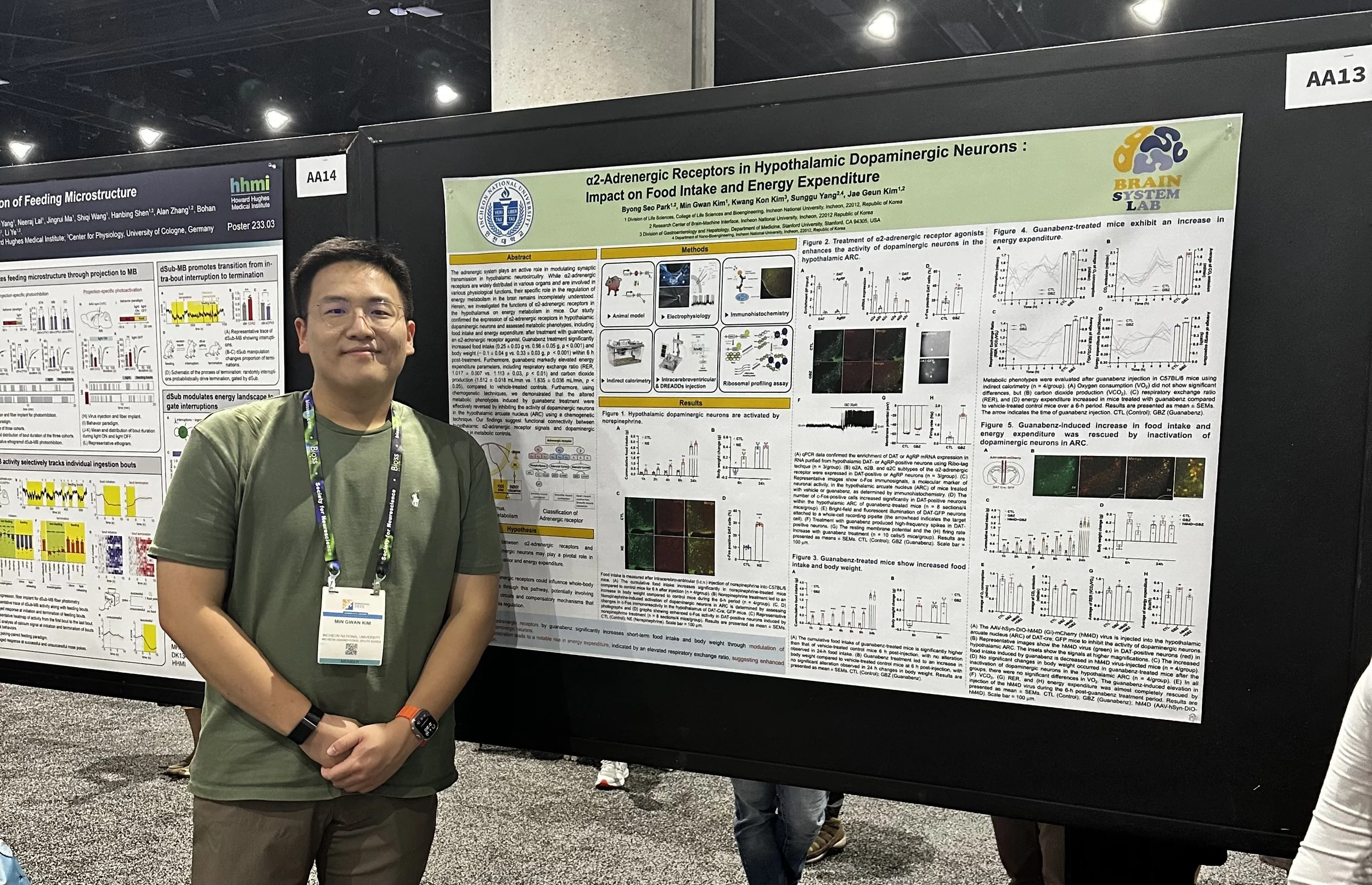Statement of Purpose
Where I’m headed
Glial Biology: Neuron-Glia and Glia-Glia Interactions
My earlier work showed that peripheral inflammation affected hypothalamic microglia and altered feeding behavior in vivo. From there, my focus shifted to how glial cells interact with each other and with neurons. At the time, my study did not address microglia–neuron communication or examine the role of astrocytes in-depth. So, I’m now interested in these mechanisms, as microglia and astrocytes have been identified as central mediators of neuroinflammation—a key driver of neurological disorders.
I believe that understanding these glia-mediated pathologies is key to elucidating the initiation and progression of diverse neurological disorders. In future research, I would like to study how microglia and astrocytes dynamically interact with each other, with neurons, and with other neural components such as oligodendrocytes and myelin, and how these interactions contribute to neuronal dysfunction and pathology.
Aging and Epigenetics in the Nervous System
In an epigenetics course, I learned how gene expression can be regulated without altering the DNA sequence and how these mechanisms are influenced by aging and disease environments. Neurodegenerative diseases, particularly Alzheimer’s Disease (AD), are largely sporadic and show marked heterogeneity across individuals. This led me to focus on how aging-induced epigenetic changes reshape CNS cell states and influence disease onset and progression.
I believe these changes reprogram glial cells and ultimately shape neuronal resilience, contributing to variation in disease trajectories across individuals. Thus, I hope to examine how glial reactivity and glia–neuron interactions shift under aging-related cues and identify key factors that may explain disease heterogeneity across neurological disorders, including neurovascular disease such as ischemic stroke and vascular dementia.
Stem–Cell–Based Models for Understanding the Nervous System
Through the course “Biomaterials and Tissue Engineering,” I came to understand how stem cell and regenerative biology approaches could be integrated into neuroscience. Motivated by this, I proposed “Minimally Invasive Syringe-Injectable Hydrogel with MSCs and Neuro-regenerative Factors” for spinal stenosis—a condition that also affected my grandmother—which received positive feedback from faculty for its therapeutic potential.
This experience naturally extended my previous neuroimmune perspective. While I initially studied how peripheral physiology interacts with the brain, I now hope to understand cell-to-cell interactions within the CNS using stem cell-based models. For example, by employing iPSC-derived neurons, astrocytes, and microglia in co-culture or 3D model systems, I’d like to explore how glia-mediated pathology alters synaptic function and neural circuits at both cellular and molecular levels.
Neurovascular Pathology and Associated Disease Modeling
Much of my research has relied on mouse models, which are valuable for understanding physiological processes and disease mechanisms. However, species differences limit their capacity to fully model human neurovascular diseases and capture long-term progression or patient-specific heterogeneity. I believe that patient-derived iPSC-based organoid platforms can offer a promising alternative, enabling more precise modeling of multicellular interactions and pathological changes in neurovascular diseases.
Thus, I hope to develop iPSC-based neurovascular models that integrate neural, vascular, and glial components to capture chronic disease dynamics. Through this, I seek to establish a human-relevant platform for studying stroke and vascular dementia and advancing translational neuroscience.

